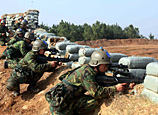
Grain corridor
Sino-Russian agricultural cooperation dates back to the 1950s, when the then Soviet government dispatched experts to help China establish its largest modern farm, the "Friendship Farm", in Heilongjiang.
Nowadays, more Chinese are starting off agricultural businesses in Russia, attracted by the opening of Russia's economy and China's rising domestic demand.
Nongken Beidahuang Business and Trade Group, a Heilongjiang-based agricultural corporation, is working with a Russian partner to build a new "Friendship Farm" in Russia - covering an area of more than 130,000 hectares, said E Zhongqi, deputy director of Heilongjiang provincial commerce bureau. In farm machinery alone, the investment was in excess of 10 million yuan, he said.
Russia utilizes only three-quarters of its 168 million hectares of cropland. And in the vast but thinly populated Far East region there are around 6.7 million hectares of idle cropland, which were abandoned during the transition to a market economy after the breakup of the Soviet Union, said Qu Wei, a researcher in Sino-Russian relations at Heilongjiang Academy of Social Sciences.
Siberia and the Far East have suffered from a population decline over the past 20 years. These regions are short of as many as 700,000 to 800,000 workers.
Zhu Changxin, commerce bureau director in Heilongjiang's Dongning county, said local farmers first worked for Russian companies and then started their own businesses in Russia's Amur and Jewish autonomous regions.
Besides China, other countries, including Japan, South Korea and New Zealand, are participating in agricultural development in Russia's Far East, where farmland is concentrated in Primorsky Territory and Amur Region.
















 Challenges remain for smoking ban
Challenges remain for smoking ban


![]()
